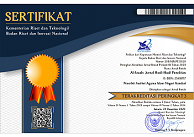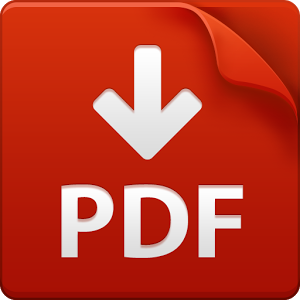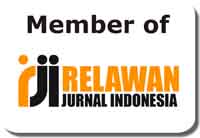Dominasi Internet di Ruang Publik: Studi Terhadap Penyebaran Wacana Gerakan Bela Islam 212 di Indonesia
Abstract
The emergence of the term new media is very closely related to the presence of the internet in human life. Even though in its development, new media is not only limited to the Internet, but the Internet is a tool or media that is used in the era of new media, such as in the events of Bela Islam 212 in Indonesia. The Islamic defense action is known as the Gerakan 212 in coverage in many secular mainstream media and community media among diverse Muslims. The Gerakan Bela Islam 212 was later appreciated as a peaceful act. That is because the action was demonstrated through such a large mass mobilization. This study aims to analyze and study how the dominance of the Internet in public spaces over the spread of discourse on the 212 Islamic movements in Indonesia. The results of this study found that the Internet and social media are new media, with its users able to easily participate, share, and create new spaces in distributing news and discourse on Gerakan Bela Islam 212. Stable Internet penetration and also the use of media networks online is a form of social control tool in a democratic system. Social media is considered capable of mobilizing the masses of the Gerakan Bela Islam 212 in Indonesia to be actively involved and present at the Jakarta Monas. This proves that the Internet dominates public spaces related to the issue of reporting and discourse of Islamic action by the use of social media networks.
Keywords
Full Text:
PDFReferences
Allifiansyah, S. Kaum muda, meme, dan demokrasi digital di Indonesia. Jurnal Ilmu Komunikasi, 13(2), 151-164, 2017.
Amos J. Peaslee. Constitutions of Nation, Vol. I, Concord, The Rumford Press, 1950.
Bolter, J. D., Grusin, R., & Grusin, R. A. Remediation: Understanding new media. MIT Press, 2000.
Bruns, A., & Highfield, T. Is Habermas on Twitter?: Social media and the public sphere. The Routledge companion to social media and politics (pp. 56-73). Routledge, 2015.
Castells, M. The new public sphere: Global civil society, communication networks, and global governance. The aNNalS of the American academy of Political and Social Science, 616(1), 78-93, 2008.
Flew, T. New media: An introduction. Oxford: Oxford University Press, 2007.
Flew, T. Broadcasting and the social contract. Global Media Policy in the New Millennium, University of Luton Press, Luton, UK, 113-29, 2002.
Habermas, J., Lennox, S., & Lennox, F. The public sphere: An encyclopedia article (1964). New German Critique, (3), 49-55, 1974.
Habermas, J. The Structural Transformation of Public Sphere: An Inquiry into Category of Bourgeois Society, Thomas Burger (terj.). Cambridge: Polity Press, 1989.
Habermas, J. Between Facts and Norms. Cambridge. Polity, 122, 1996.
Kellner, D. Habermas, the public sphere, and democracy: A critical intervention. Perspectives on Habermas, 2000.
Kaplan, A. M., & Haenlein, M. Users of the world, unite! The challenges and opportunities of Social Media. Business horizons, 53(1), 59-68, 2010.
Lafebvre, H. The Production of Space. Basil: Blackwell, 1992.
Lepore, J. The whites of their eyes: the Tea Party's revolution and the battle over American history (Vol. 16). Princeton University Press, 2011.
McChesney, R. W. Rich media, poor democracy: Communication politics in dubious times. New Press, 2016.
Norris, P. Preaching to the converted? Pluralism, participation and party websites. Party politics, 9(1), 21-45, 2003.
Owen, D. New media and political campaigns. The Oxford handbook of political communication, 2017.
Papacharissi, Z. The Virtual Sphere. The Internet as a Public Sphere. In Praktiken der Überwachten (pp. 43-60). Springer VS, Wiesbaden, 2019.
Pembayun, J. G. Rekonstruksi Pemikiran Habermas di Era Digital. Jurnal Komunikasi dan Kajian Media, 1(1), 1-14, 2017.
Rahmawati, D. MEDIA SOSIAL DAN DEMOKRASI DI ERA INFORMASI. Jurnal Vokasi Indonesia, 2(2), 2016.
Santoso, D. H. Media Dan Politik: Pertarungan Ruangn & Kuasa Media Menjelang Pemilihan Presiden. Jurnal Komunikasi, 6(2), 42-47, 2016.
Sardini, N. H. Demokrasi dan Demokrasi Digital di Indonesia: Peluang dan Tantangan. Prosiding Senaspolhi, 1(1), 2018.
Soliha, S. F. Tingkat ketergantungan pengguna media sosial dan kecemasan sosial. Interaksi: Jurnal Ilmu Komunikasi, 4(1), 1-10, 2015.
Watie, E. D. S. Komunikasi dan media sosial (communications and social media). Jurnal The Messenger, 3(2), 69-74, 2016.
Widayat, Rossi Maunofa, Achmad Nurmandi, Yeni Rosilawati, Haedar Nashir, “Twitter and Political Propaganda in the 2019 Elections in Indonesia”, International Journal of Psychosocial Rehabilitation, Volume 24 (7), 6851-6880, 2020.
https://apjii.or.id/downfile/file/BULETINAPJIIEDISI05November2016.pdf. diakses pada tanggal 12/05/2019
https://inet.detik.com/telecommunication/d-3367034/aksi-212-di-monas-lonjakan-seluler-tertinggi-di-satu-titik. Diakses pada 20 Mei 2019
http://jabar.tribunnews.com/2016/12/03/sejarah-212. Diakses pada 17 Mei 2019.
https://news.detik.com/berita/3496185/ahok-divonis-2-tahun-penjara. Diakses pada 18 Mei 2019.
DOI: http://dx.doi.org/10.31332/ai.v0i0.1631
Copyright (c) 2020 Al Izzah

This work is licensed under a Creative Commons Attribution-NonCommercial-ShareAlike 4.0 International License.










